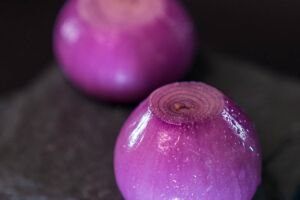In this article, we present a comprehensive list of 25 high fibre foods available in India, along with their descriptions and nutritional values. Let’s explore these wholesome options and make our diets more fiber-friendly! A well-balanced diet is essential for maintaining good health, and incorporating high-fiber foods into your meals is a crucial aspect of it. Fiber-rich foods not only aid in digestion but also provide a range of health benefits, including improved heart health, weight management, and better blood sugar control.
1. Lentils (Masoor Dal, Toor Dal, Moong Dal):
Lentils are a staple in Indian households and are packed with fiber, protein, and essential nutrients. With approximately 15 grams of fiber per cup, lentils are a versatile ingredient that can be used in soups, stews, and curries.

2. Chickpeas (Chana):
Chickpeas, also known as garbanzo beans, are a popular legume in Indian cuisine. They provide about 12.5 grams of fiber per cup and are a fantastic source of plant-based protein. Chickpeas can be used in curries, salads, or even roasted as a crunchy snack.
3. Split Peas (Matar Dal):
Split peas, derived from dried green or yellow peas, are highly nutritious and fiber-rich. With around 16 grams of fiber per cup, split peas are commonly used in soups, stews, and traditional dal recipes.
4. Black Beans (Rajma):
Black beans are a great addition to any diet, offering approximately 15 grams of fiber per cup. They are a rich source of protein, antioxidants, and various vitamins and minerals. Rajma curry is a popular dish made with black beans in India.
5. Kidney Beans (Rajma):
Kidney beans are widely used in Indian cooking and are known for their high fiber content. With about 13 grams of fiber per cup, kidney beans are a versatile ingredient that can be used in salads, soups, and side dishes.
6. Oats:
Oats are a nutritious whole grain that is rich in fiber, particularly soluble fiber called beta-glucan. A half-cup serving of oats provides approximately 4 grams of fiber and can be enjoyed as a wholesome breakfast option.
7. Barley (Jau):
Barley is a versatile grain that is commonly used in soups, stews, and salads. It offers approximately 6 grams of fiber per cup and is known for its high content of soluble fiber, which can help regulate cholesterol levels.
8. Whole Wheat (Gehu):
Whole wheat is a staple grain in India and is widely used to make chapatis, rotis, and other bread-based dishes. It contains approximately 2 grams of fiber per slice and is a healthier alternative to refined grains.
9. Brown Rice:
Brown rice is an excellent source of dietary fiber, as it undergoes minimal processing compared to white rice. A cup of cooked brown rice provides around 3.5 grams of fiber and is a healthier choice for maintaining digestive health.
10. Quinoa:
Quinoa is a protein-rich grain that also happens to be an excellent source of dietary fiber. With approximately 5 grams of fiber per cup, quinoa is a versatile ingredient that can be used in salads, pilafs, and as a substitute for rice.
11. Buckwheat (Kuttu):
Buckwheat is a gluten-free grain that offers approximately 4 grams of fiber per cup. It is commonly used to make nutritious pancakes, porridge, and even in the preparation of fasting foods during festivals like Navratri.
12. Ragi (Finger Millet):
Ragi, also known as finger millet, is a nutrient-dense grain that is rich in fiber and other essential nutrients. It provides approximately 8 grams of fiber per cup and is often used to make rotis, dosas, and porridge.
13. Whole Wheat Pasta:
Whole wheat pasta is an excellent alternative to traditional refined pasta. It contains about 6 grams of fiber per cup and provides a healthier option for pasta lovers while increasing their fiber intake.
14. Amaranth (Rajgira):
Amaranth is a gluten-free grain that is high in fiber and protein. With around 5 grams of fiber per cup, amaranth is used in various Indian dishes, including porridge, sweets, and even in the preparation of fasting foods.
15. Flaxseeds (Alsi):
Flaxseeds are tiny nutritional powerhouses that are loaded with fiber, omega-3 fatty acids, and antioxidants. Just two tablespoons of flaxseeds provide approximately 4 grams of fiber. They can be added to smoothies, cereals, or used as an egg substitute in baking.
16. Chia Seeds:
Chia seeds are rich in fiber, protein, and healthy fats. They offer approximately 10 grams of fiber per ounce and are known for their ability to absorb water, creating a gel-like consistency. Chia seeds can be added to yogurt, smoothies, or used as a topping for salads and desserts.
17. Pears:
Pears are not only delicious but also a great source of dietary fiber. A medium-sized pear contains about 5 grams of fiber. Enjoy them as a snack or add sliced pears to salads for a refreshing and fiber-packed meal.
18. Apples:
The phrase “an apple a day keeps the doctor away” holds true for its fiber content as well. A medium-sized apple provides around 4 grams of fiber. Include apples in your daily diet to enjoy their numerous health benefits.
19. Guava:
Guava is a tropical fruit that is incredibly rich in fiber, containing approximately 9 grams of fiber per cup. Enjoy this juicy fruit as a snack or blend it into a refreshing smoothie.
20. Oranges:
Oranges are not only a great source of vitamin C but also a good source of dietary fiber. One medium-sized orange offers around 4 grams of fiber. Add freshly squeezed orange juice to your breakfast or enjoy the fruit as a healthy snack.
21. Strawberries:
Strawberries are a delicious and fiber-rich fruit that provides approximately 3 grams of fiber per cup. They can be enjoyed on their own, added to smoothies, or used as a topping for cereals and desserts.
22. Spinach:
Spinach is a leafy green vegetable that is packed with fiber, vitamins, and minerals. It offers approximately 4 grams of fiber per cup and can be incorporated into salads, stir-fries, and curries for a nutritious boost.
23. Broccoli:
Broccoli is a cruciferous vegetable that is not only high in fiber but also rich in antioxidants and other beneficial compounds. With about 5 grams of fiber per cup, broccoli can be steamed, roasted, or added to soups and salads.
24. Carrots:
Carrots are not only good for your eyesight but also a great source of dietary fiber. A medium-sized carrot provides around 2 grams of fiber. Enjoy them raw as a snack or include them in stir-fries and salads.
25. Sweet Potatoes:
Sweet potatoes are a delicious and nutritious root vegetable that offers approximately 4 grams of fiber per medium-sized potato. They can be baked, roasted, or mashed as a healthier alternative to regular potatoes.
Conclusion:
Incorporating high-fiber foods into your daily diet is a simple and effective way to improve your overall health and well-being. The 25 high-fiber foods mentioned in this article provide a wide range of options to choose from, ensuring that you can enjoy a diverse and nutritious diet.
Remember, the recommended daily fiber intake for adults is around 25 to 30 grams. By including a variety of high-fiber foods such as lentils, chickpeas, whole grains, fruits, vegetables, and seeds in your meals, you can easily meet this target and reap the numerous benefits of fiber.
From lentil-based curries to fiber-rich fruits and vegetables, Indian cuisine offers an abundance of delicious options to add to your plate. Experiment with different recipes and combinations to create meals that are not only packed with fiber but also tantalize your taste buds.
As you make dietary changes, it is important to gradually increase your fiber intake and drink plenty of water to aid digestion. Additionally, consult with a healthcare professional or a registered dietitian if you have any specific dietary needs or concerns.
So, make a conscious effort to include these high-fiber foods in your daily meals, and embark on a journey towards better digestive health, improved weight management, and reduced risk of chronic diseases. Your body will thank you for it!
Note: The nutritional values provided in this article are approximate and may vary depending on factors such as cooking methods, ripeness of fruits, and portion sizes. It is always recommended to refer to reliable sources and nutritional labels for precise information.
- The Benefits of Applying Curd On Hair
- How to Cure Lost Voice Overnight? Effective Home Remedies to Cure a Lost Voice Overnight
- How To Cure Lactose Intolerance? Strategies and Lifestyle To Managing Lactose Intolerance
- The Health Benefits of Onion
- 11 Effective Home Remedies for Healing Anal Fissures
- How To Cure Neck Pain Fast At Home Remedies?
- Pumpkin Health Benefits For Women And Men
- How To Eat Chia Seeds | A Guide on How to Eat Chia Seeds for Optimal Nutrition and Flavorful Wellness
- What Is Moringa and its Health Benefits?
- Lion Mane Powder: Lion Mane Powder for Maximum Results, Side Effects















